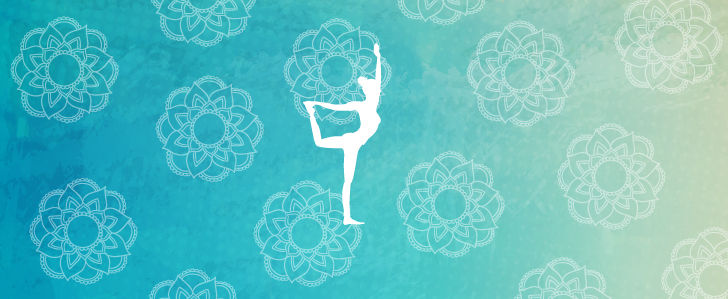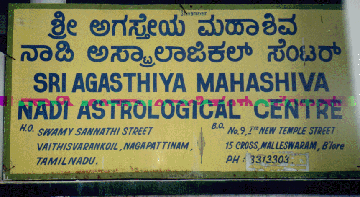- Home
- Archive -May 2016
- Leaves of Life . . .

Leaves of Life - Palm Leaf Astrology
- In :
- Others
May 2000
By Shoba Naidu
It’s amazing to find bundles of palm leaf writings bound by thread and preserved for centuries. Written by the sages of yore, the hoary predictive art called Nadi Shastra is said to hold the key to future generations.
You meet a stranger. He tells you your name, age, profession, name of your parents and spouse, number of children, tales of past life exploits and your future prospects. All this from ancient palm leaf manuscripts, written at least 2,000 years ago. Truly disconcerting!
And this is not fiction. Such experiences are commonplace with experts in possession of these leaves spreading out all over the country and abroad.
In Tamil, nadi means “in search of”. Says Durai Subburathnam of Sri Kousiha Agasthya Mahasiva Vakkiya Nadi Jothida Nilayam, Chennai: “The person whose palm leaf record exists with us will definitely approach us at a predestined time specified on the leaves.”
The process is simple. To locate a manuscript, the thumb impression of the person is taken on paper, left for women and right for men. But opinions differ. While Subburathnam claims that these are classified into 1,008 types, Delhi based nadi reader B Raju says that there are only 108 types. The palm leaves are also arranged accordingly. Finding your leaf is not as easy as giving your thumb impression. It is a painstaking job to match the two, sometimes it takes several hours.
Says Raju: “If we are unable to locate the leaf, we ask the client to come again after a few days as we have to get it from our native place. Or we refer to Sukshma nadi, which gives brief predictions.” These leaves also give you the planetary positions in the person’s horoscope. “This is the confirmation stamp,” says Raju.
“The past life details and future predictions were written by the great sages centuries ago. Due to divine insight they could look into and write the details of all who would one day go for a nadi reading,” explains Subburathnam. The leaves once located are “sung” by the readers in ancient Tamil verse, which is simultaneously translated into the language of the client’s choice. And in today’s hi-tech world, you can even get future recordings on audiocassettes. “Pleasant or unpleasant, we do not add any prediction on our own. We only read whatever is written on the leaf. You can also read your name, if you know the language,” says Subburathnam. The process of becoming a nadi reader is rigorous. “The apprentice, usually a family member, has to live in a gurukul or 10 years.”
There are different theories on how predictions are made. Late Dr B V Raman, former editor of The Astrological Magazine, had done major research on the nadi. He believed that this system was special and original to Indian culture and genius. Till the 1930s, nadis were a sealed book even to the majority of Hindu astrologers. Raman felt that nadi writers based their predictive applications on the extensive astrological literature. Attributed to Sage Parasara, all were in the form of Sanskrit sutras.
The best system, according to Raman, is based on 36 tantra nadis, each of which contains 1,588.320 astrological charts. These recur every 360 years. Another theory is that kshudra devatas (angels, spirit beings) pass on the information about the individual to the nadi reader. “The accuracy of the forecasts depends on the intensity of the rituals performed and recitation of the mantra to propitiate the devata,” wrote Raman in Hinduism Today.
Thousands of such palm leaves are spread all over the country. Known as Nadi Grantha in the South and Bhrigu Samhita in the North. These were written by the seven rishis – Agasthya, Kausika, Vyasa, Bohar, Bhrigu, Vasishtha and Valmiki. Explains Subburathnam: “The leaves carry predictions for all, irrespective of cast, creed, country. Agasthya predictions are in Tamil.”
However, the leaves held by the present day nadi readers in the South belonged to King Sarabhoj, the Maratha ruler of Tanjavur. The leaves started disintegrating with age. Scholars were employed to interpret the ancient Tamil and Sanskrit script and rewrite on fresh ola(palm leaves). These were written in vatta ezathu, Tamil script, with a sharp, nail-like instrument called ezuthani. Nadi readers preserve these leaves by rubbing peacock oil on auspicious occasions. Some of the original leaves are still preserved at Saraswathi Nilayam in Tanjavur.

Later, when the British left India, they took with them priceless manuscripts pertaining to science, ayurveda and astronomy. Astrological manuscripts were left behind which were later auctioned. A community of astrologers (“valluvars”) from Vaitheeswaran Koil in Tanjavur bought them and made nadi reading a hereditary profession. In fact, B Raju a nadi reader who hails from this place and has set up the Sri Kausika Mahasiva Nadi Jothida Nilayam in Delhi, says: “Nadi readers from our native place have set up centres all over the country.” However, each centre works independently.
But how are predictions made? In his book Nadi Astrology, Chandulal S Patel says: “Nadis are of different types. Some Nadis give entire life histories of persons based on astrological reasoning. In such cases past and future events go wrong to a small extent. Nadi-practitioners are genuine astrologers.
“Another type of Nadi-practitioners is said to have acquired control over kshudra (mean or low) sadhana mantra. They often use clairvoyant powers to make horoscopes from the palm of the hand and in many cases discarnate being like nature spirits are engaged to get information. This sadhana, Karna Pishachi, tells the practitioner in his ear all the past which he reproduces to the client. It is all correct but fails miserably about future predictions.”
Both Subburathnam and Raju disagree. “Our predictions are 100 per cent accurate. Many of our satisfied clients bring their friends and relatives for predictions. There is no question of tantra or mantra. We read whatever is written there and if the leaf is not found we say so,” says Subburathnam. “We do not charge until the client is fully satisfied,” adds Raju.
Skeptics argue that the astrologer asks several questions and then puts two and two together. Subburathnam denies the charge. “We do ask a few questions to help us locate the right leaf, but the client has to only answer in monosyllables “yes” or “no”. He doesn’t deny that fake readers have spread their tentacles all over the country in order to make money.
In Hoshiarpur, where the Bhrigu Samhita practitioners are concentrated, the reader casts a chart for the moment you come for a consultation and then proceeds to find the corresponding leaf which may take hours.
There are thirteen chapters or Kandams in nadi shastra, each dealing with a specific area of a client’s life. A client can choose the chapter she wants to be read. Initial consultation costs are Rs 150 for local people. For outstation clients the fees are a little more as translation charges are added. Each additional chapter costs Rs 150. Raju’s consultation fee is Rs 500.
Subburathnam employs many nadi readers, writers who note down the predictions for the benefit of clients and translators (English, Hindi, Telugu and Malayalam). Predictions are given for every two-year period and guidance offered on pariharams (remedial measures). Many consider the pariharams as a moneymaking gimmick. Subburathnam disagrees. “We read the pariharams only if asked. Moreover, most of the measures are simple like visiting temples, feeding the poor or giving alms to the nadi reader and wearing talismans. But these are optional.”
Whatever may be the truth the long queues at the nadi readers’ offices test your patience. So if you are interested in a reading better make an appointment.
An appointment with fate!
To read more such articles on personal growth, inspirations and positivity, subscribe to our digital magazine at subscribe here
Life Positive follows a stringent review publishing mechanism. Every review received undergoes -
- 1. A mobile number and email ID verification check
- 2. Analysis by our seeker happiness team to double check for authenticity
- 3. Cross-checking, if required, by speaking to the seeker posting the review
Only after we're satisfied about the authenticity of a review is it allowed to go live on our website
Our award winning customer care team is available from 9 a.m to 9 p.m everyday
The Life Positive seal of trust implies:-
-
Standards guarantee:
All our healers and therapists undergo training and/or certification from authorized bodies before becoming professionals. They have a minimum professional experience of one year
-
Genuineness guarantee:
All our healers and therapists are genuinely passionate about doing service. They do their very best to help seekers (patients) live better lives.
-
Payment security:
All payments made to our healers are secure up to the point wherein if any session is paid for, it will be honoured dutifully and delivered promptly
-
Anonymity guarantee:
Every seekers (patients) details will always remain 100% confidential and will never be disclosed

